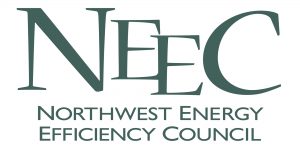The new year brings more political news than just the specter of the President Donald J. Trump administration, as both Washington and Oregon will convene new legislatures in tandem with two newly re-elected Governors. While Washington and Oregon begin their new biennial cycles, things look much like they did in 2016. In Oregon, Democrats control both chambers and the Governor’s office while Washington maintains the lone Republican stronghold in the Senate. In Washington, Gov. Inslee has placed carbon front and center (see above), but Oregon seems less likely to substantially engage the climate crisis with ambitious legislation. Energy, and especially efficiency, may play “small ball” in both states.
On the heels of 2016’s significant increase in Oregon’s renewable portfolio standard, and given that the administrative rules for its implementation are still in process, big ticket clean energy items seem unlikely. In Washington, the mandate for full funding of public education will eat up a lot of bandwidth. The energy independence act (I-937) now fully a decade old may spark some interest in v2 legislative ideas.
NEEC’s legislative priorities continue to be focused in a few key areas. In Washington, NEEC continues to support statewide energy benchmarking and disclosure requirements that actually work. The state has had energy disclosure requirements for the past 8 years, but a lack of enforcement features means that its requirements are by and large ignored. In addition, NEEC supports the continued appropriation of capital budget to fund the state’s widely successful energy grant program for investment in energy efficiency in public buildings.
In both states, NEEC continues to push for key changes in the structure of energy efficiency incentive payments to utility customers. First, we support the widespread adoption of meter based savings approaches (sometimes referred to as pay for performance). The long term future of energy efficiency rests with the evolution of efficiency program design from measure based, estimated savings calculations, to something that encourages and rewards comprehensive whole building energy improvements – calculated at the meter. In addition, NEEC strongly supports changes to how the baseline for incentives is established for projects in existing buildings. As the need to substantially renovate existing buildings increases, and as the energy codes continue to increase in stringency, the market continues a “frozen in place” pace under current rules that establish the code as baseline rather than historical levels of performance. NEEC will continue to push these important issues in conversations with stakeholders, regulators, and elected officials throughout 2017.
